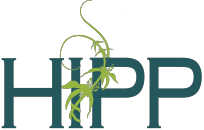Learn More
Invasive Plant Guide
What are invasive plants?
Invasive plants are not native to our location. Lacking the natural controls from their native habitats, they overwhelm our native plants’ light, water, space and nutrients, thus decreasing the invertebrate, bird, and microbial life that depend on our native plants. Invasives also degrade recreational experiences (whether walking, birding, or hunting), damage agriculture and human health, affect forest regeneration and water quality.
How to control invasive plants
The Harpswell Invasive Plant Partnership (HIPP) recommends starting with non-chemical methods to control invasives: pulling, digging, or mowing. Sometimes, cautious use of herbicides is less disturbing to the environment than other possible control methods. If a plant infestation is too large or dense to realistically remove mechanically, chemicals might be needed. In those cases, we carefully follow the advice given for each invasive and will often use certified landscaping professionals to address the toughest infestations.
What to consider:
Using chemicals that are mixed too strongly can damage the visible leaves while never seeping into the root structure to kill the plant. Also, using chemicals at the wrong time of the season will not succeed, potentially requiring overuse. No chemicals are allowed within 25’ of water in Harpswell.
Please read Harpswell’s pesticide ordinance using this link before considering the use of herbicides: Pesticide Ordinance
Chemical names:
Glyphosate is sold as Round-up or other brands.
Triclopyr is sold as Garlon or other brands.
The labels tell the % of the chemical. If necessary, dilute with water to match the advised strength.
Harpswell’s Top 22 Invasive Plants
HIPP has decided to focus on plants deemed invasive by the Maine Natural Areas Program (MNAP). MNAP has published detailed information to aid with invasive plant identification and control. HIPP has compiled information on 22 of the most problematic invasive plants on Harpswell lands into a convenient weatherized collection called ‘A Steward’s Guide’. You are welcome to download individual fact sheets by clicking on the links below. You can also request a copy of ‘A Steward’s Guide’ by emailing [email protected]. We recommend a donation of $15 for each copy requested to defray publication costs.
Click Here for Invasive Plant Fact Sheets
Get Guidance
HIPP-help
Invasive plants are a problem in Harpswell. They reduce our critical native plants, pollinators, butterflies and birds. They disrupt agriculture. They can harm human health.
HIPP-help plant experts can help you identify invasive plants on your property and suggest control methods and strategies.
This service is free of charge; however, HIPP appreciates contributions to support its work. To donate, send a check to Harpswell Heritage Land Trust, PO Box 359, Harpswell, ME 04079. Please put HIPP in the memo line. You can also donate online by clicking here.
Email [email protected] to request a HIPP-help volunteer.
And more
Other Resources
There are many good resources on identifying and controlling invasive plants, as well as on planting natives in their place. Here are some of our favorite websites on invasive plants:
Maine Natural Areas Program Invasive Plants Photo Gallery
Michigan State University’s Best Control Practice Guide to Invasive Plants
For lists of native Maine plants to consider for your property, check out:
- Plants for the Maine Landscape (University of Maine Cooperative Extension)
- Gardening to Conserve Maine’s Native Landscape: Plants to Use and Plants to Avoid (University of Maine Cooperative Extension)
- The Wild Seed Project
We encourage you to contact HIPP with your questions about invasive plants and your observations of invasive plants in Harpswell. You can reach HIPP at [email protected] or by filling out the form below.
